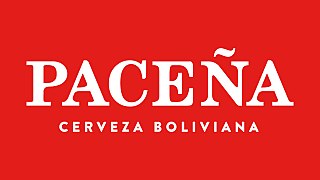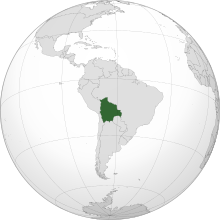
Lloyd Aéreo Boliviano S.A.M., was the flag carrier and principal airline of Bolivia from 1925 until it ceased operations in 2010. Before its demise it was headquartered in Cochabamba and had its main hubs at Jorge Wilstermann International Airport and Viru Viru International Airport. Founded in September 1925, it was the second oldest airline in South America after Avianca and one of the oldest airlines in the world.
The history of the Jews in Latin America began with conversos who joined the Spanish and Portuguese expeditions to the continents. The Alhambra Decree of 1492 led to the mass conversion of Spain's Jews to Catholicism and the expulsion of those who refused to do so. However, the vast majority of conversos never made it to the New World and remained in Spain slowly assimilating to the dominant Catholic culture. This was due to the requirement by Spain's Blood Statutes to provide written documentation of Old Christian lineage to travel to the New World. However, the first Jews came with the first expedition of Christopher Columbus, including Rodrigo de Triana and Luis De Torres.

The Bolivian Army is the land force branch of the Armed Forces of Bolivia. Figures on the size and composition of the Bolivian army vary considerably, with little official data available. It is estimated that the army has between 26,000 and 60,000 men.

The history of the Jews in Argentina goes back to the early sixteenth century, following the Jewish expulsion from Spain. Sephardi Jews fleeing persecution immigrated with explorers and colonists to settle in what is now Argentina, in spite of being forbidden from travelling to the American colonies. In addition, many of the Portuguese traders in the Viceroyalty of the Río de la Plata were Jewish. An organized Jewish community, however, did not develop until after Argentina gained independence from Spain in 1816. By mid-century, Jews from France and other parts of Western Europe, fleeing the social and economic disruptions of revolutions, began to settle in Argentina.
Jews have been present in El Salvador since the early 19th century, starting with Sephardic Jews and continuing with the arrival of refugees from Europe during World War II. El Salvador has the second largest community in Central America, the majority established in San Salvador, which is the second city with the most Jews in Central America, behind Panama City.

The history of the Jews in Mexico began in 1519 with the arrival of Conversos, often called Marranos or "Crypto-Jews", referring to those Jews forcibly converted to Catholicism and that then became subject to the Spanish Inquisition.

The Sephardic Jews that were exiled from Spain and the Mediterranean area in 1492 and 1497, coupled with other migrations dating from the 1700s and during World War II contributed to Dominican ancestry.

Boliviana de Aviación, legally incorporated as Empresa Pública Nacional Estratégica Boliviana de Aviación and commonly known as BoA, is the flag carrier airline of Bolivia and is wholly owned by the country's government. Founded in October 2007 and headquartered in Cochabamba, it operates most of its domestic network out of its primary hub at Jorge Wilstermann International Airport and maintains focus cities at El Alto International Airport and Viru Viru International Airport. Almost all international flights, including long-haul services to Madrid and Miami, operate out of Viru Viru airport in Santa Cruz de la Sierra due to the severe limitations of El Alto International Airport in La Paz, located over 4,000 metres (13,000 ft) above sea level.
Rugby union in Bolivia is a minor, but growing sport.
Red UNO de Bolivia is a national Bolivian television network owned by businessman Ivo Kuljis. It started operations in April 1984. Its most notable programming is Notivisión (news) and "El Mañanero ". It also maintains affiliation deals with three channels in Potosí, Sucre and Tarija.

Paceña is a Bolivian beer produced in La Paz, hence its name that means the one of La Paz. The beer is produced by CBN a company that dates back to 1877 and that controls 80% percent of the Bolivian beer market. Paceña is made at about 3600 meters above sea level with purified water from the Andes.

Bolivians are people identified with the country of Bolivia. This connection may be residential, legal, historical or cultural. For most Bolivians, several of these connections exist and are collectively the source of their being Bolivian.
Nuevo Mundo Israelita (NMI) is a Jewish newspaper published weekly in Caracas, Venezuela. Founded in 1943 by Moisés Sananes with the name "El Mundo Israelita". In 1973, the main Venezuelan Jewish institutions decided to merge it with the monthly "Unión" and the magazines "Maguén" and "Menorá" to create a new institutional and official weekly, "Nuevo Mundo Israelita". It is distributed freely to the Venezuelan Jewish community, and also to journalists and intellectuals in the Venezuelan society. It publishes articles written by its own journalists and collaborators, opinion notes, community news and articles of religious interest. Also employs or translates into Spanish articles originally published in other international Jewish media including Aurora, Haaretz, The Jerusalem Post, The Times of Israel, Israel Hayom, Iton Gadol, Tribuna Judía, Yediot Aharonot, etc.
The Supreme Court of Justice is the highest court of ordinary jurisdiction in Bolivia, based in Sucre. Its powers are set out in Articles 181–185 of the 2009 Constitution and the Law of the Judicial Organ. It was first seated on 2 January 2012.

The history of the Jews in Uruguay dates back to the colonial empire. The most important influx of Jewish population occurred during the end of the 19th century and the first half of the 20th century, mainly during the World War II.
Ricardo Udler Cymerman is a Bolivian gynaecologist. He currently serves as Chairman of the Israelite Club of Bolivia and acts as leader of the Jewish community of Bolivia in general.

The Movimiento Judío por los Derechos Humanos was a human rights organization in Argentina. It was founded by Marshall Meyer and Herman Schiller on August 19, 1983.
The Jewish Community of Chile is an organization of Jews in Chile. The Jewish Community of Chile is a non-profit organisation. As of 2022 Gerardo Gorodischer is its president.
The following is a chronology of notable events from the year 2023 in Bolivia.











